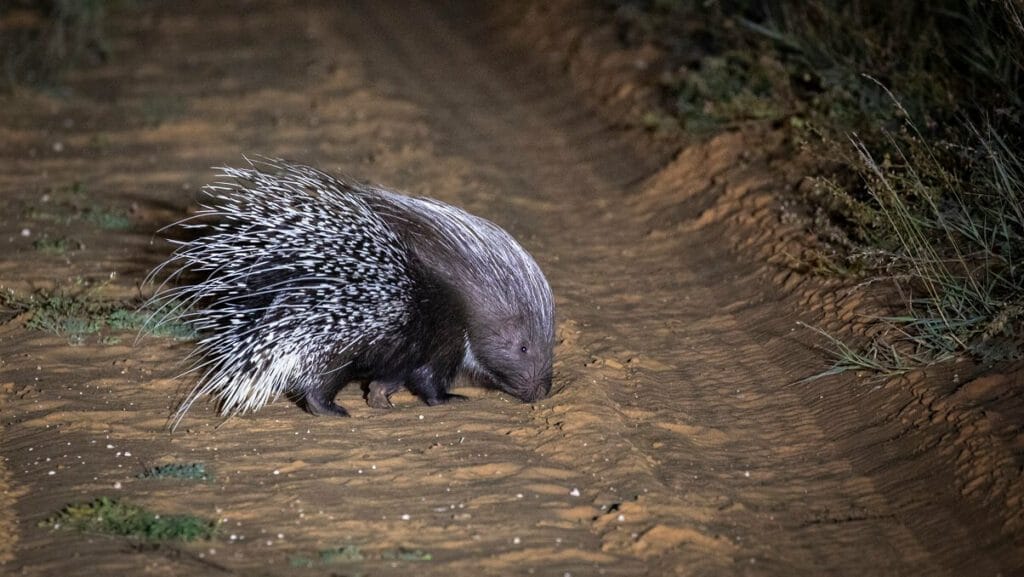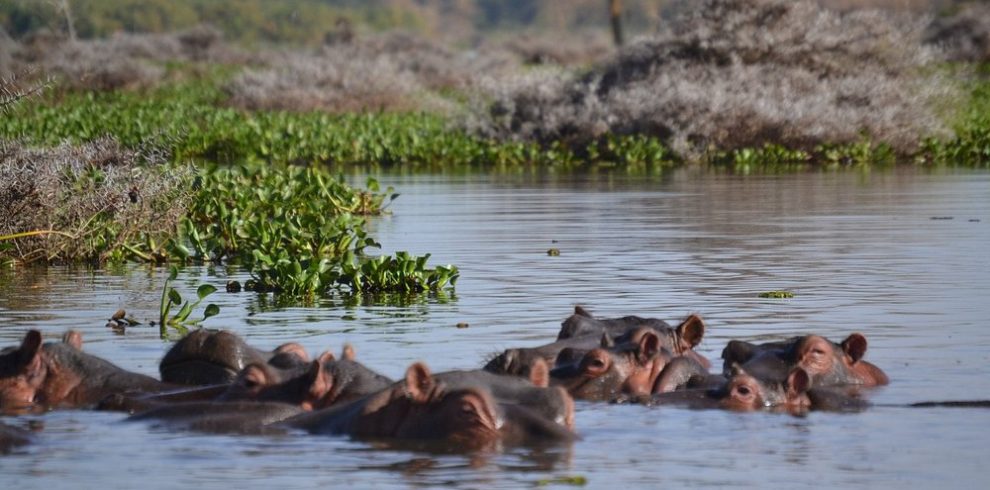
The Cape porcupine, known scientifically as Hystrix africaeaustralis, is one of the most intriguing creatures of the African wilderness. Its spiny coat and nocturnal tendencies have given this intriguing rodent a reputation as a tough, adaptable survivor. Despite its somewhat unassuming appearance, the Cape porcupine is a creature of great significance to the ecosystems it inhabits and is filled with unique behaviors that make it stand out in the animal kingdom.
Either because of its astounding capabilities to protect itself by use of its quills, because of its complex societal setup, or because of its place within the eco-landscape, there are a lot of things to learn about this marvelous creature. In this article, we delve into 5 fascinating facts about the Cape porcupine, examining its physical characteristics, lifestyle, behavior, and ecological importance. These facts will enlighten you in the knowledge of one of the most spectacular animals in the world of Africa and will give you a clue of the life of a porcupine living in the wide variety of landscapes of the southern part of Africa.
1. Cape Porcupines Are the Largest Rodents in Africa

When someone thinks of rodents, one can easily think of or imagine rodents that are of small size and scuttling i.e., mice or squirrels. However, the Cape porcupine defies this typical image of a rodent with its large, hefty body and distinctive spiny appearance. As the largest rodent species in Africa, the Cape porcupine can weigh up to 30 kilograms (about 66 pounds) and grow as long as 75 centimeters (approximately 2.5 feet) from head to tail, not including its quills. This qualifies them among the biggest species of porcupines globally.
The Cape porcupine’s large size allows it to thrive in a variety of habitats, from the arid deserts of the Namib to the lush savannas and forests of southern Africa. The size and physical strengths of these porcupines come to play in terms of foraging them their food and protecting them against predators. Unlike the more familiar, smaller rodents, Cape porcupines exhibit characteristics that are associated with larger mammals. They have stocky, muscular bodies with a combination of quills, spines along with soft fur and that makes them appear unique among other rodents. Their rhinoceros like quills offer strong protective measure against predators and this adds another strength to their status as one of the most distinctive rodents of the African ecosystem.
2. Their Quills Are a Powerful Defense Mechanism

One of the most well-known and fascinating facts about Cape porcupines is their remarkable defense mechanism—quills. This spine has a needle shape and they differ in ensuring the success of the porcupine as a species since they cover the body of the porcupine on the back, the tail and sides. They are barbed hairs with a modified tip known as the quill which is hard to remove after it pierces through the skin of a predator. When threatened, the Cape porcupine will face the danger head-on, making itself appear larger by puffing out its quills and making hissing or grunting noises to warn off attackers.
The porcupine does not have the quills embedded to the skin. Rather, they are loosely encapsulated onto the skin and can be readily removed once a predator touches. Once they are detached they penetrate into the vicinity of the attacker and eject into their skin causing pain and discomfort. This defense tactic is particularly effective against larger predators like lions, leopards, and hyenas, although the Cape porcupine is still vulnerable to such threats in some cases. Interestingly, Cape porcupines do not “shoot” or “throw” their quills as is commonly believed. Instead, they are comfortable with backing into a predator, whereby they protect themselves with sharp spines. This is a very powerful defensive move making the attacker change his mind and finally recoil in pain and anger.
Despite their reliance on quills for protection, Cape porcupines do not primarily use them for aggression. The quills are the passive defense, and they will not start using it unless there is another way out.
3. Nocturnal and Solitary Creatures

Cape porcupines are primarily nocturnal, which means they are most active during the night. These dark eyes are huge, and are very suitable to see in the low light conditions, and thus they will be able to move around, and be able to forage at night under cover. When it is in daylight, they usually take sleeps in the small holes and even in the thickets to keep off the intense sunlight and predators. Of particular fascination in their night time routines is the way in which they conduct their foraging.
Cape porcupines are herbivores, and they have a varied diet that consists of a range of plant materials, including roots, tubers, bark, and fruits. By night they come out of their burrows and spend their time scratching around after food, in which case they may well scrape up roots or tree-bark with their strong forepaws. They are good diggers and can get underground to food sources, another important attribute in their survival, in more arid areas, where food may be limited. Although they are solitary creatures for much of their lives, Cape porcupines are not entirely antisocial. They interact with one another through vocalizations but these are hissing, grunting and squealing.
Another way to show that they are around is that they will mark their territory with scent glands which are close to the front of their waist. However, Cape porcupines generally prefer to stay alone, except when they come together during mating season or when mothers care for their young. In some regions, Cape porcupines have been observed sharing burrows or dens, but these occurrences are relatively rare. The fact that the species is solitary serves to reduce competition on both food and shelter since each porcupine will often have his/her territory.
4. Their Burrows and Home Life Are Quite Intricate

A fascinating aspect of Cape porcupine behavior is their intricate system of burrows. These burrows, often located in sandy soils or beneath dense vegetation, serve as shelters where Cape porcupines sleep during the day and raise their young. Burrow system is rather complicated, and it can include several chambers that are used in certain ways such as sleeping, nesting, and food storage.
Cape porcupines are expert diggers, and their burrows can extend to impressive depths. They are diggers and have powerful, curved claws to aid them and they usually have more than one hole to use should any predators come near the hole. The burrows also act as good insulators against dramatic temperatures as these excavations are cooler in the daytime heat and warmer in the cooler evening shades. In addition to providing shelter, Cape porcupines use their burrows as a place to raise their young.
Female Cape porcupines give birth to live young, usually between one to three offspring, after a gestation period of about 90 days. Newborn porcupines are born without hard quills but within days the porcupines develop the hardened quills. During infancy, the young are very reliant on their mother who keeps them safe and also feeds them up until the time when they are old enough to go out there. The porcupine also has burrow which form part of the social structure. Although Cape porcupines are mostly solitary, mothers and their young remain close to each other for the first year of life. In the process, the young porcupines acquire critical survival lessons, such as finding food and protecting themselves against possible danger.
5. They Play an Important Role in Their Ecosystem

While the Cape porcupine is often admired for its physical and behavioral traits, it also serves a vital ecological function in the habitats it occupies. As herbivores, Cape porcupines are important contributors to seed dispersal and plant regeneration. Their dietary preferences (digging roots and feeding on bark) may radically affect plant communities, especially where they are least intensively grazed by others of their kind. For example, as Cape porcupines forage for tubers and roots, they inadvertently help aerate the soil, which can enhance water absorption and promote the growth of new plants. This process and the fact that they are seed dispersers assists to ascertain the health and diversity of plants in their habitat. Additionally, the Cape porcupine’s role as prey for larger predators ensures that they are a vital component of the food chain. While their quills make them difficult to catch, Cape porcupines are still an important food source for carnivores such as lions, leopards, and hyenas. This interdependence in the ecosystem assists in achieving the balance in the food web whereby the population of both the herbivores and carnivores will not increase.
Cape porcupines also help maintain the health of the environment by preventing overgrowth in certain plant species. Their feeding patterns are selective and thus control the growth of some aspect of vegetation where there is a more balanced and sustainable ecosystem. In this way, Cape porcupines are not only survivors in their own right, but they are also important contributors to the broader ecological processes that sustain their habitat.
Conclusion
The Cape porcupine is a remarkable creature that showcases the diversity and adaptability of African wildlife. Having such a large size, unusual quills and being nocturnal coupled with complex burrowing activities and their role in the ecosystem, it becomes apparent that this spiny rodent is quite important to the landscapes that it inhabits. Understanding these facts about Cape porcupines sheds light on their fascinating behaviors and the resilience that allows them to thrive in some of Africa’s harshest environments. Whether you are an animal lover, a wildlife enthusiast, or simply curious about Africa’s biodiversity, the Cape porcupine offers a wealth of intrigue and wonder. Through its complex social structure, distinctive physical traits, and important role in the ecosystem, the Cape porcupine proves to be a truly fascinating and vital part of the natural world.






